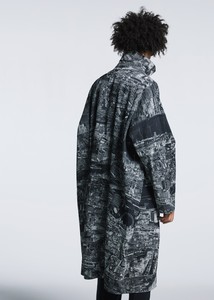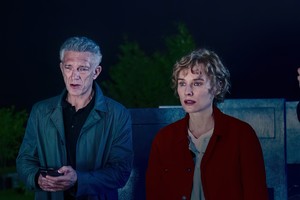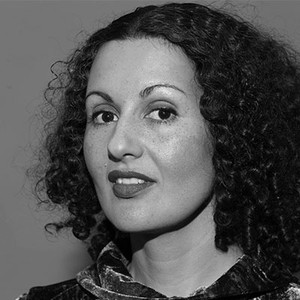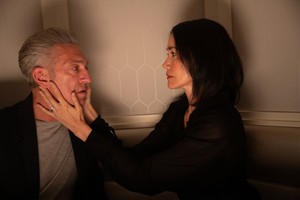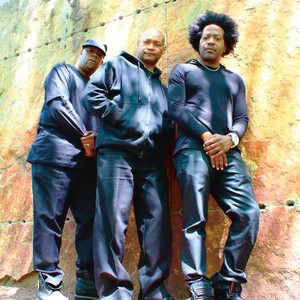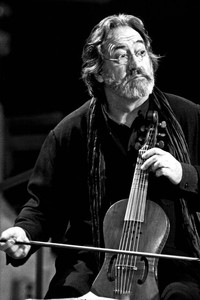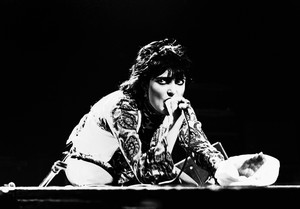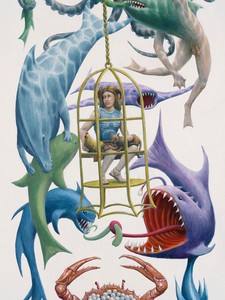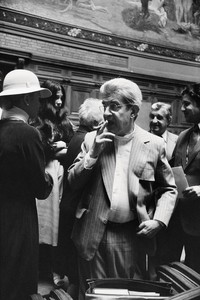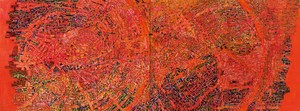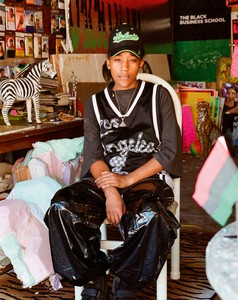“Until death do us part” is a new beginning for Karsh (Vincent Cassel) in David Cronenberg’s new film, The Shrouds. Karsh, still inconsolable four years after the death of his beloved wife, Becca (Diane Kruger), has started GraveTech, a service that allows clients to monitor the deteriorating corpses of their loved ones through high-tech shrouds and surveillance. Dominating the film are screens (LCD gravestones) and an elegant Howard Shore score, equally mournful and romantic. The overall artistic tone sustains that same midpoint, with jokes on top.
Many of the jokes are more overtly Jewish in tone than in previous Cronenberg films. Matzo ball soup, pastrami sandwiches, and the phrase “duck soup” pop up frequently. This is Jewishness as positioned against Christianity; the Shroud of Turin is brought up as a fraud compared with Karsh’s too real shrouds. But it is also a secular, atheistic Jewish identity, like Cronenberg’s own, where in life and after death there is only the body. As in his previous peculiar Jewish comedy, A Dangerous Method, a theme here is valuing the body (Freud) over the spirit (Jung).
“I am involved with her body in the way that I was in life, and even more,” Karsh explains ecstatically about tracking Becca’s skeleton in zoomed-in, high-resolution close-ups. He was so merged with his wife that her body belongs to him, too. It is perversity as an all-encompassing romance. Karsh’s excitement is that of the longtime lover as well as the filmmaker. The GraveTech observational camera creates a sort of film installation within the narrative film, seen most clearly when Karsh tries on shrouds himself, producing gorgeous renderings of his flesh, muscles, then skeleton.
The main narrative thrust of the film is that Karsh is trying to date again, to learn to have sex with another body while thinking and dreaming of his late wife’s. One date goes askew when dinner ends with a visit to Becca’s grave. After that, he successfully starts a relationship with possible new investor Soo-Min Szabo (Sandrine Holt), who notably cannot see. In contrast to Karsh, she sees through physical touch, not flat screens.
“I’m out of practice. It’s been decades since I’ve tried to seduce women,” Karsh says, narrating his dating progress to Becca’s dog groomer sister Terry (also played by Diane Kruger), and her ex-husband, Maury (a terrific Guy Pearce). Maury is an IT schlemiel and probable schmuck who becomes central to an improbable conspiracy plot involving Russian, Chinese, or Japanese operators who want control of GraveTech’s surveillance technology. And Terry, after years of friendship, jumps into bed with Karsh the minute he becomes involved with Soo-Min.
One reading of the film, eccentric but narratively sound, is that Terry and Maury don’t exist. These characters could be like the dreams Karsh has of conversing with his dead wife while her body is increasingly mutilated by cancer until it resembles the Venus de Milo. The sex Karsh has with Terry—which ends as suddenly as it begins—could be a physical manifestation of his thinking of his wife’s body while sleeping with Soo-Min. And Maury, the obsessive stalker ex-husband, is the perfect contrast to Karsh as widower. In one scene, Maury describes Terry as Karsh’s “ex-sister-in-law.” Karsh is affronted. “I don’t think there are ‘exes’ after death!” he says.
This intensely personal film, written by Cronenberg while grieving his wife of forty-three years, is essentially about the strange present tense of being widowed. There may be resentment, pain, and longing in a divorce, but hopefully there is also closure. But with widower Karsh, the extreme physical loss is contrasted by a mental and emotional continuum.
Whether Maury and Becca are hallucinations or cinematic devices, the conspiracy plots are familiar emotionally to anyone experiencing loss. Why did the loved one die on this day, this hour, but not yesterday, not two months from now? The randomness is hard to process, so the mind looks for answers, whether spiritual or medical. But ultimately there is no answer because death is definitively arbitrary. And when the film ends suddenly, the viewer is left holding on to that feeling.
